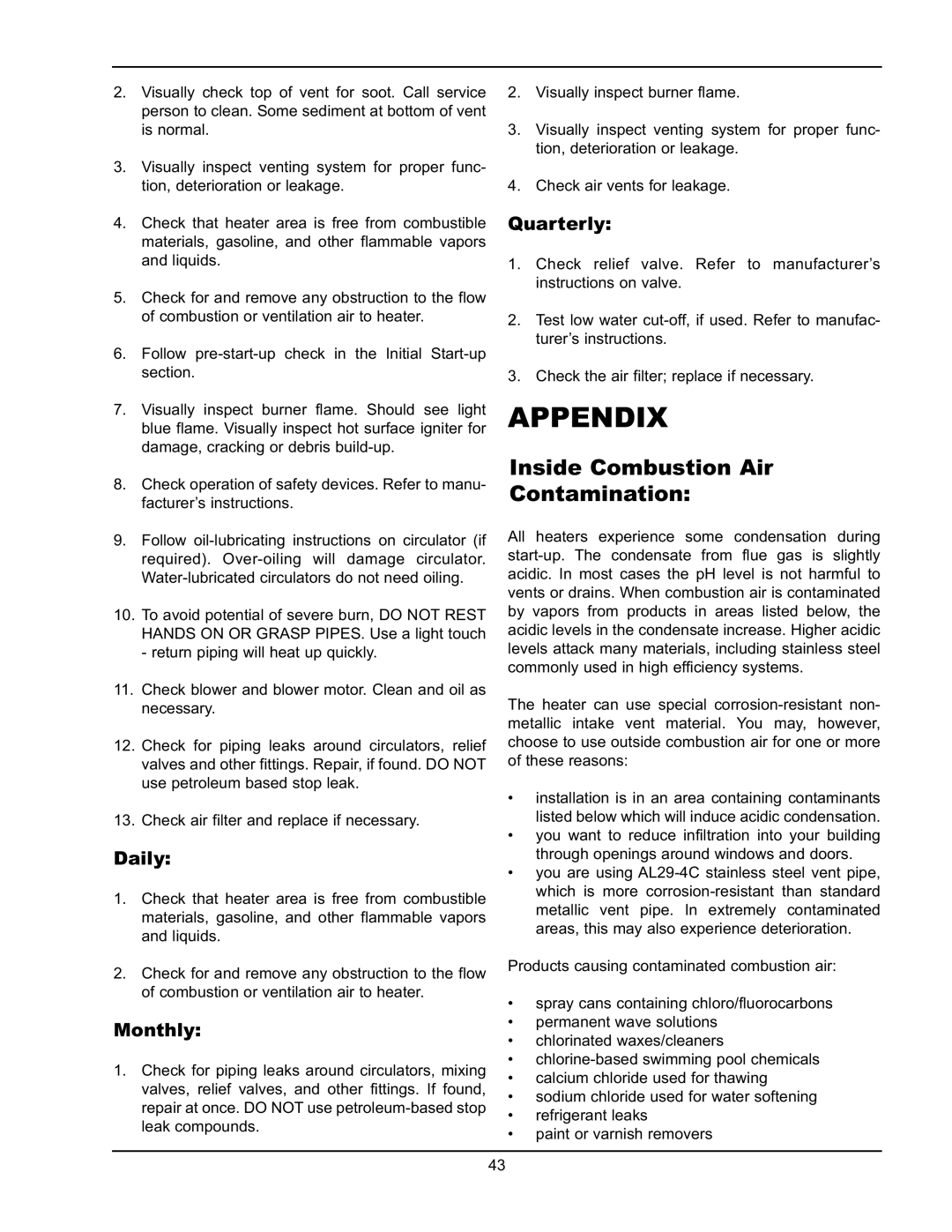
2.Visually check top of vent for soot. Call service person to clean. Some sediment at bottom of vent is normal.
3.Visually inspect venting system for proper func- tion, deterioration or leakage.
4.Check that heater area is free from combustible materials, gasoline, and other flammable vapors and liquids.
5.Check for and remove any obstruction to the flow of combustion or ventilation air to heater.
6.Follow
7.Visually inspect burner flame. Should see light blue flame. Visually inspect hot surface igniter for damage, cracking or debris
8.Check operation of safety devices. Refer to manu- facturer’s instructions.
9.Follow
10.To avoid potential of severe burn, DO NOT REST HANDS ON OR GRASP PIPES. Use a light touch - return piping will heat up quickly.
11.Check blower and blower motor. Clean and oil as necessary.
12.Check for piping leaks around circulators, relief valves and other fittings. Repair, if found. DO NOT use petroleum based stop leak.
13.Check air filter and replace if necessary.
Daily:
1.Check that heater area is free from combustible materials, gasoline, and other flammable vapors and liquids.
2.Check for and remove any obstruction to the flow of combustion or ventilation air to heater.
Monthly:
1.Check for piping leaks around circulators, mixing valves, relief valves, and other fittings. If found, repair at once. DO NOT use
2.Visually inspect burner flame.
3.Visually inspect venting system for proper func- tion, deterioration or leakage.
4.Check air vents for leakage.
Quarterly:
1. Check relief valve. Refer to manufacturer’s instructions on valve.
2. Test low water
3. Check the air filter; replace if necessary.
APPENDIX
Inside Combustion Air
Contamination:
All heaters experience some condensation during
The heater can use special
•installation is in an area containing contaminants listed below which will induce acidic condensation.
•you want to reduce infiltration into your building through openings around windows and doors.
•you are using
Products causing contaminated combustion air:
• spray cans containing chloro/fluorocarbons
• permanent wave solutions
• chlorinated waxes/cleaners
•
• calcium chloride used for thawing
• sodium chloride used for water softening
• refrigerant leaks
43 • paint or varnish removers
